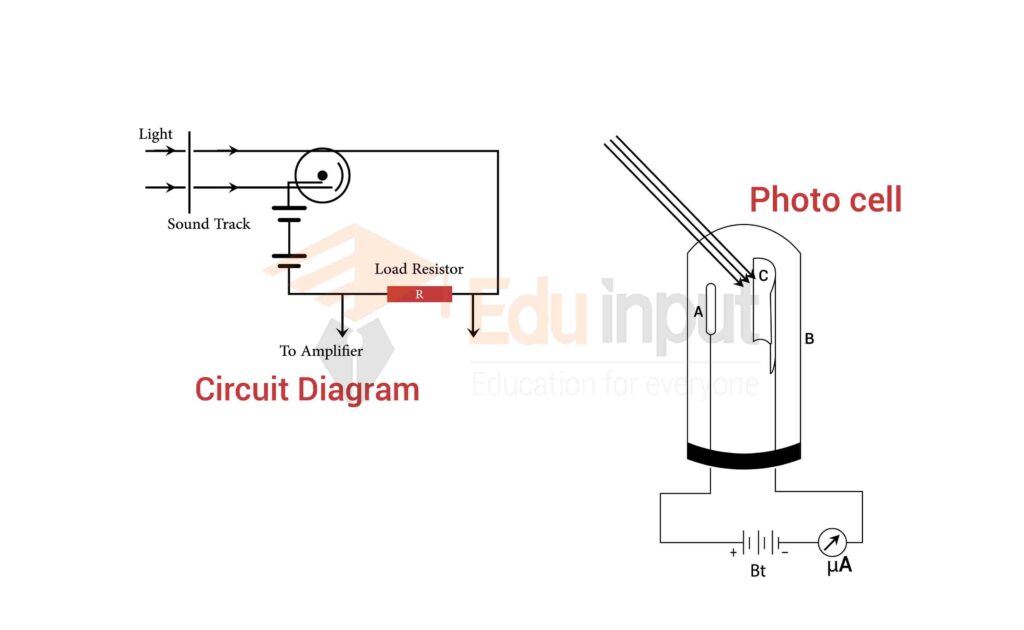Photocell | Einstein Explanation of Photoelectric Effect
Photocell is a light-sensitive device that converts light energy into electrical energy. The working of Photocell is based on the photoelectric effect.
Einstein’s explanation of the Photoelectric effect
Einstein explained the photoelectric effect on the basis of Max Plank’s radiation law that light is emitted or absorbed in quanta known as photons. The energy of each photon is proportional to the frequency of radiation
E∝f
E=hf
Where h is the Planck constant and f is the frequency of radiation. According to Einstein when incident light falls on the metal surface, each photon transfers all of its energy to one electron only.
Thus energy absorbed by a single electron in the metal surface is the total energy of a photon. The electron needs certain minimum energy to escape from the metal surface.
If the energy of an incident photon is sufficient, the electron is ejected instantaneously from the metal surface.
Work Function
The minimum energy required to eject the electrons out of the metal surface is called the work function and is given by
Work function= φ=hfo
When a photon of energy hf falls on the metal surface a part of its energy is used by the electron to break free from the metal and the rest energy appears as kinetic energy of the photon electron.
Incident photon energy is equal to work function+ Max. K.E of photoelectrons.
hf= φ+1/2(mv2)max
hf – φ = 1/2(mv2)max
When K.Emax=0 then f=fo
0= hfo – φ
hfo = φ
hf – hfo = 1/2(mv2)max
K.Emax= hf – hfo
Since all the emitted electrons do not possess the maximum Kinetic energy some electrons come straight out of the metal surface and some lose energy in atomic collisions before coming out.
The above equation only holds for those electrons which come out with full surplus energy.
The phenomenon of the photoelectric effect cannot be explained on the basis of the wave nature of light but it can be only explained by assuming light as corpuscles of energy known as photons.
Thus it shows the corpuscular nature of light. Alber Einstein was awarded the Noble prize in physics in 1921 for his explanation of the photoelectric effect.
Photocell
A device that converts light energy into electrical energy is called a photocell.
Working of photocell
The working of a photocell is based on the photoelectric effect. It consists of an evacuated glass bulb with a thin anode rod and a cathode of a photosensitive surface.
The material of the cathode is chosen in such a way that it operates at a particular frequency of incident light.

Sodium and Potassium cathode emits electrons for visible light. Cesium-coated oxidized silver emits electrons for infrared light and some other metals respond to ultraviolet light.
When light falls on the photo-emissive surface circuit, the electron is emitted and electric current flows in the circuit, which increases with an increase in the light intensity.
The current stop when the light beam is interrupted.
Applications of Photocell
- Security System
- Counting Systems
- Automatic door systems
- Automatic street lighting
- Exposure meter for photography
- Soundtrack of movies







Leave a Reply